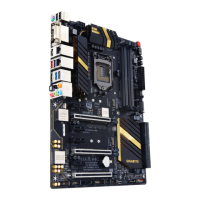
Do you have a question about the Gigabyte GA-Z170X-UD5 and is the answer not in the manual?
| Internal memory | 64 GB |
|---|---|
| Memory slots type | DIMM |
| Supported memory types | DDR4-SDRAM |
| Supported memory clock speeds | 2133, 2400, 2666, 2800, 3000, 3200, 3300, 3333, 3400, 3466 MHz |
| Audio chip | Realtek ALC1150 |
| Component for | PC |
| Motherboard chipset | Intel® Z170 |
| Audio output channels | 7.1 channels |
| Motherboard form factor | ATX |
| Motherboard chipset family | Intel |
| Windows operating systems supported | Windows 10 Education, Windows 10 Education x64, Windows 10 Enterprise, Windows 10 Enterprise x64, Windows 10 Home, Windows 10 Home x64, Windows 10 Pro, Windows 10 Pro x64, Windows 7 Enterprise, Windows 7 Enterprise x64, Windows 7 Home Basic, Windows 7 Home Basic x64, Windows 7 Home Premium, Windows 7 Home Premium x64, Windows 7 Professional, Windows 7 Professional x64, Windows 7 Starter, Windows 7 Starter x64, Windows 7 Ultimate, Windows 7 Ultimate x64, Windows 8.1 Enterprise x64, Windows 8.1 Pro, Windows 8.1 Pro x64, Windows 8.1 x64 |
| Processor socket | LGA 1151 (Socket H4) |
| Compatible processor series | Intel Celeron, Intel Pentium |
| Graphics card | HD Graphics |
| Maximum graphics card memory | 512 MB |
| Number of displays supported | 3 |
| CPU fan connector | Yes |
| USB 2.0 connectors | 2 |
| Number of SATA connectors | 11 |
| Number of EATX power connectors | 1 |
| USB 3.2 Gen 2 (3.1 Gen 2) connectors | 0 |
| Supported storage drive interfaces | SATA |
| Analog audio output | 5 |
| BIOS type | UEFI AMI |
| ACPI version | 5.0 |
| BIOS memory size | 256 Mbit |
| HDMI version | 1.4 |
| eSATA ports quantity | - |
| USB 2.0 ports quantity | USB 2.0 ports have a data transmission speed of 480 Mbps, and are backwards compatible with USB 1.1 ports. You can connect all kinds of peripheral devices to them. |
| Ethernet interface type | Gigabit Ethernet |
| Bundled software | User's Manual, I/O Shield, One 2-Way SLI bridge connector, One G Connector, One pack of back I/O dust covers |
| Depth | 244 mm |
|---|---|
| Width | 305 mm |
Legal notices, copyright, and disclaimer for the user manual.
Explains the different types of documentation provided for the product.
Guide on how to locate and identify the motherboard's revision number.
Essential safety and handling guidelines before installing components.
Detailed technical specifications of the motherboard's hardware components.
Step-by-step guide for installing the CPU and its cooler, including sub-steps.
Instructions for installing RAM modules and dual-channel configurations.
Guide for installing add-in cards into PCI Express slots.
Instructions for configuring AMD CrossFire or NVIDIA SLI.
Overview of all ports and connectors on the motherboard's rear panel.
Details on motherboard's quick buttons, switches, and voltage measurement points.
Identification and description of internal headers and connectors on the motherboard.
Describes the initial GIGABYTE logo screen displayed during system boot.
Navigating the BIOS Setup program's main interface and function keys.
Advanced settings for CPU, memory, voltages, and system temperatures.
Displays motherboard and BIOS version, allows system language and time setting.
Configuration options for boot order, security, and startup features.
Settings for onboard devices like LAN, Audio, and USB controllers.
Configuration options related to the motherboard's chipset, including graphics and audio.
Settings for controlling system power states and power-saving features.
Options for saving BIOS changes, loading defaults, and exiting the setup.
Steps to set up SATA controllers and install hard drives for RAID.
Guide to installing necessary drivers and the OS for RAID configurations.
Instructions for installing chipset drivers using the provided utility.
Information on GIGABYTE's applications and free software included on the driver disk.
Details about drivers on the disk and GIGABYTE contact information.
Guides for updating BIOS using Q-Flash and @BIOS tools.
Details on EasyTune, System Info Viewer, Fast Boot, Smart TimeLock, USB Blocker, Smart Keyboard, Smart Backup, Ambient LED, 3D OSD, Cloud Station, AutoGreen, Easy RAID.
Utility for accessing apps and setting the default startup screen.
Guide to configuring audio jacks for various speaker setups and microphone input.
Frequently asked questions and a troubleshooting procedure for startup issues.
List and explanation of POST debug LED codes for system diagnostics.
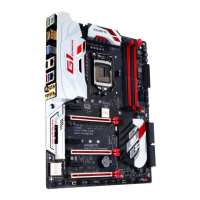
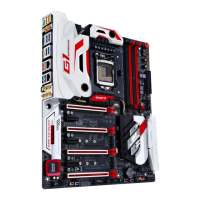
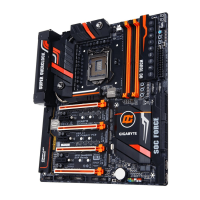

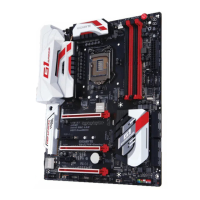
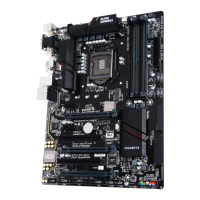
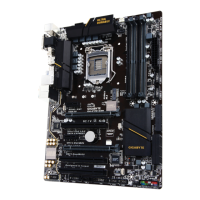
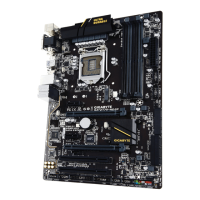


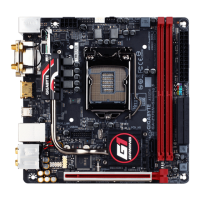
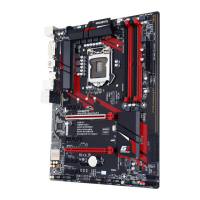
